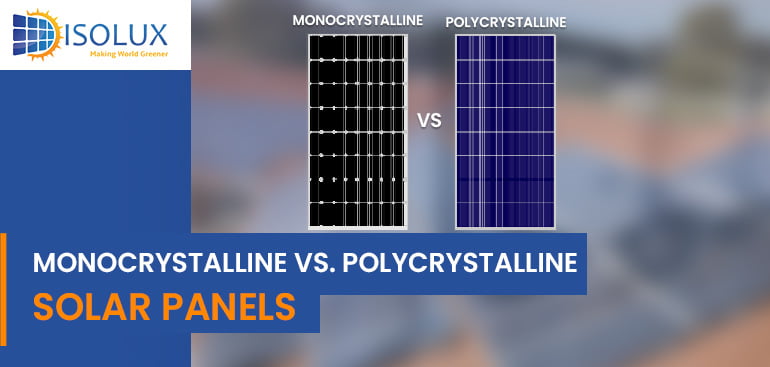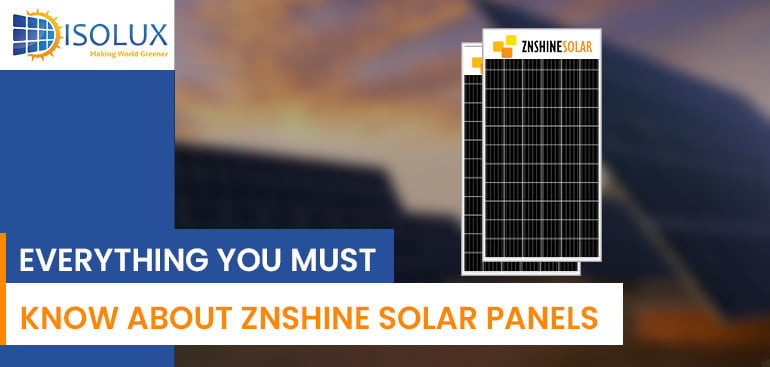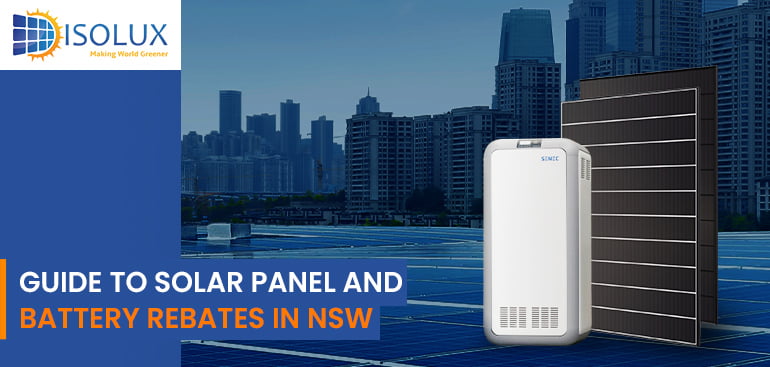There is a huge demand for solar energy and solar panels in Australia. Most homes and even commercial premises already have a solar power system installed.
- Are you looking to leverage the potential of solar energy to power your homes?
- Do you want to go for solar installation Sydney?
When going for solar installation Sydney, deciding which type of panels you want to install is crucial.
Key Differences
- Cost: Monocrystalline panels are more expensive but more efficient. Polycrystalline panels are budget-friendly but less efficient.
- Efficiency: Monocrystalline panels offer higher efficiency (18-22%) compared to polycrystalline panels (15-17%).
- Space: Monocrystalline panels occupy less roof space due to their higher efficiency.
Monocrystalline Solar Panels
Monocrystalline panels boast a single silicon crystal, grown in a lab and shaped into a cylindrical ingot. The ingot is then sliced into thin discs, forming octagonal-shaped silicon wafers. This meticulous process maximizes space utilization in solar panels and enhances efficiency. However, the manufacturing is more expensive, and the shaved silicon pieces cannot be repurposed.
Polycrystalline Solar Panels
On the other hand, polycrystalline panels use multiple silicon fragments melted together, creating a cube that is then cut into thin wafers. This method reduces waste, as leftover materials can be reused. While the production process is less expensive, the resulting solar cells have imperfections, making them less efficient than their monocrystalline counterparts.
Factors To Differentiate Monocrystalline and Polycrystalline Solar Panels
| Monocrystalline | Polycrystalline | |
| Color | Black | Blue |
| Cost | More Expensive | Less Expensive |
| Efficiency Rate | 15%–25% | 14%–17% |
| Life Span | 25-40 Years | 25-35 Years |
| Temperature Coefficient | Lower temperature coefficient, more efficient in heat | Higher temperature coefficient, less efficient in heat |
Appearance
- Both Monocrystalline and Polycrystalline solar panels differ from each other on the basis of their appearance.
- Monocrystalline panels are darker in appearance since they have a black hue.
- Polycrystalline panels on the other hand are bluish in appearance.
Silicon Configuration
- Silicon configuration makes the difference between Monocrystalline vs. Polycrystalline solar panels more visible.
- Both Monocrystalline and Polycrystalline solar panels are made primarily of silicon. However, the configuration of silicon is what differentiates the two.
- In Monocrystalline solar panels, each PV cell is made up of a single silicon crystal.
- In Polycrystalline solar panels, many silicon crystals are combined during the manufacturing process.
Manufacturing Process
- When we talk about Monocrystalline vs. Polycrystalline solar panels, there is a difference in the manufacturing process.
- Monocrystalline panels are manufactured using single-crystal silicon (cylindrical) that is melted at high temperatures and cut into wafers.
- Polycrystalline panels are made with multi-crystalline silicon. This melted silicon is first placed in moulds before it is cut into wafers.
Cost Difference
The cost of Monocrystalline solar panels is more than Polycrystalline solar panels. Solar panel System with Monocrystalline is more expensive due to the following reasons:
- More expensive and complex manufacturing process.
- Monocrystalline panels are more efficient than Polycrystalline panels.
- Monocrystalline panels are made of pure (single) silicon crystal, while Polycrystalline panels are made of several silicon fragments.
Productivity and Efficiency
- Monocrystalline panels are more efficient and productive than Polycrystalline panels.
- Most Monocrystalline panels have an efficiency of 18-22%, while Polycrystalline panels have an efficiency of around 15-1%.
Space Occupied On The Roof
Monocrystalline panels being more efficient and compact, occupy less roof space than polycrystalline panels.
Solar Panel Cost
Due to their intricate manufacturing process, monocrystalline solar panels come with a higher upfront cost. However, potential energy savings over time may offset this initial investment. Homeowners can explore various incentives, credits, and rebates to alleviate costs.
Choosing the Right Panels
The choice between monocrystalline and polycrystalline panels depends on factors such as roof space, budget, and personal preference. Monocrystalline panels, with higher efficiency and a sleeker appearance, are ideal for those prioritizing power output and aesthetics. Polycrystalline panels, though less efficient and more visible, offer a more budget-friendly option.
Now that you have read about the various factors differentiating Monocrystalline vs Polycrystalline solar panels, it is time that you go for solar installation in Sydney with the utmost care
Depending on your need, you should opt for either a Monocrystalline or Polycrystalline solar panel.
Read Next Blog: Solar Panel Array Oversizing – Meaning and Benefits




